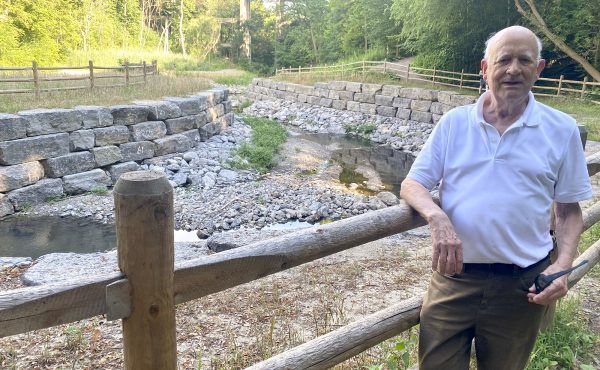
I have a friend who recently bought a commercial building in the Entertainment District. He has some decent plans on how to properly develop the site and is extremely excited about using green technologies, especially wind power. I’ve been constantly reminding him that harnessing wind power in a downtown setting is erratic and inefficient because tall buildings disrupt and distort local wind patterns. But this notion is starting to change.
A company called AeroVironment (also known for developing unmanned aircraft for the US military) has developed Architectural Wind, a series of “micro-turbines” that can be mounted to the top lip of a building’s exterior wall. The turbines are designed to catch the breezes that swirl up the sides of a building. Since Architectural Wind doesn’t have one central pole holding a single turbine, micro-turbines do not require anything to be structurally added to a roof. Each turbine costs about $6,000 US.
The designers are also touting the turbine’s sleek design as an architectural feature that can overtly showcase a building or company’s commitment to the environment.





3 comments
I have my doubts about this. It’s a very large amount of materials for a small amount of power – the 6kW they mention is 15 units. I would be surprised if these ever made a return on investment, either financially or in energy used to make them.
Better to build a utility-scale unit where there’s decent wind to offset the building’s usage.
the above may be valid – I hope the installations are and remain secure.
This is cool. I think the point is that these would be picking up power that is not otherwise picked up, could be funded easily by property owners, and could be implemented widely – so it’s quite separate from large-scale wind farms, which can be implemented at the same time on a different track. I’m guessing the return on investment is at least comparable to solar panels (also expensive for limited power). Probably at first it would be something people do on a break-even basis for public relations, but over time the cost would come down and it could become an effective and easy-to-implement form of distributed power generation. Every bit helps.